Utilization of Mechanically Recycled Carbon Fibers in Vinyl Ester Composites
Abstract
1. Introduction
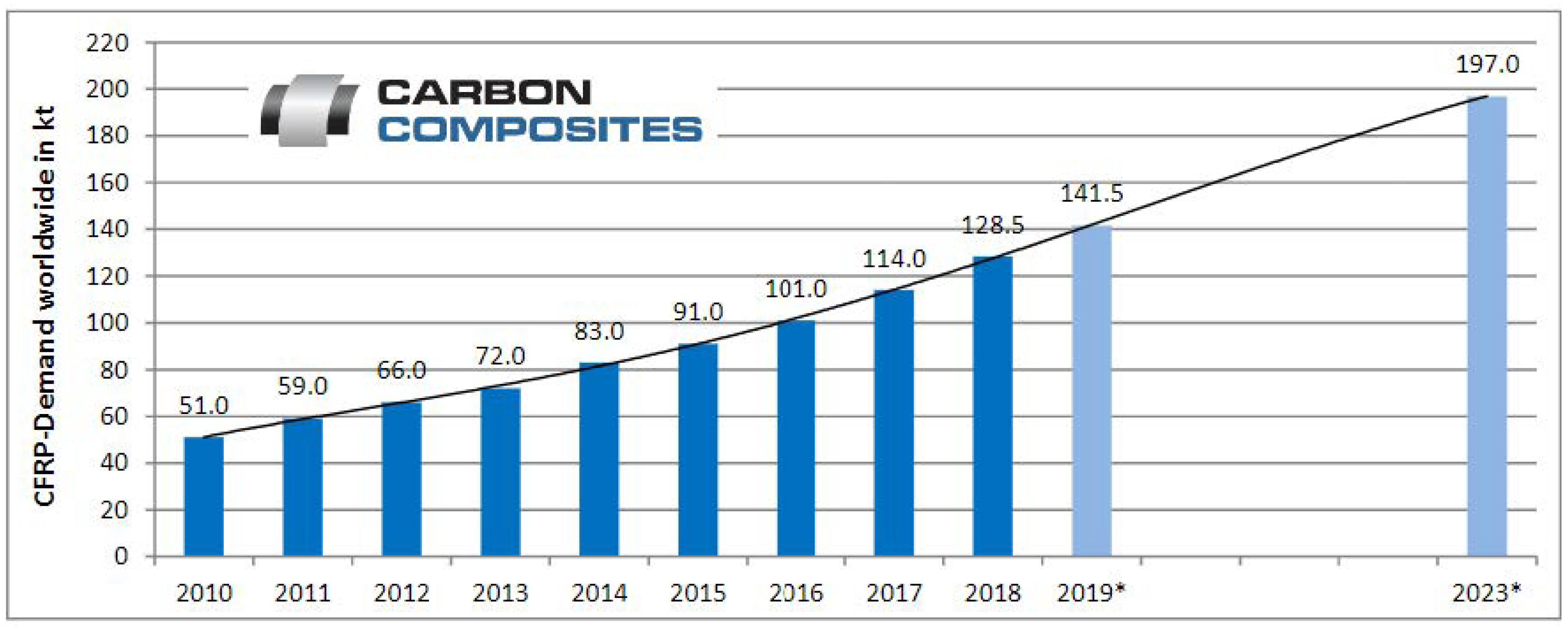
2. Materials and Methods
2.1. Vinyl Ester
2.2. Carbon Fibers
2.3. Sample Preparation
2.3.1. Water Absorption
- M: percentage mass change;
- Mt: mass of the sample after a given immersion time (g); and
- Mo: original mass of the sample (g);
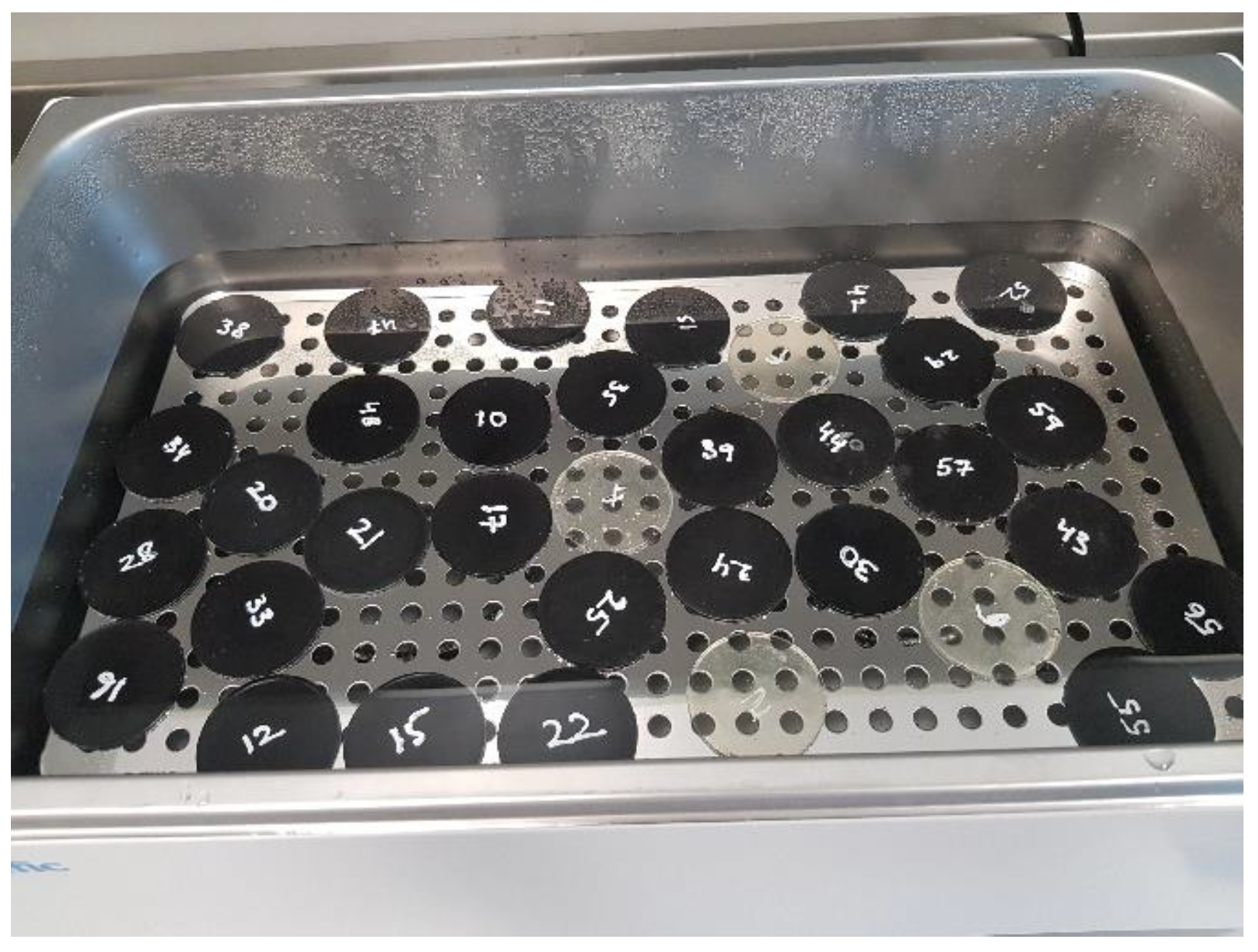
2.3.2. Tensile
2.3.3. Compression
2.3.4. Flexural
- : stress in the outer fibers at the midpoint (MPa);
- P: load at a given point on the load-deflection curve (N);
- : modulus of elasticity in bending (MPa);
- L: support span (mm);
- b: width of beam tested (mm);
- d: depth of beam tested (mm); and
- m: slope of tangent to the initial straight-line portion of the load–deflection curve (N/mm of deflection).
2.3.5. Thermal Conductivity
2.3.6. DSC
2.3.7. SEM
3. Results
3.1. Water Retention
3.2. Tensile Test
3.3. Compression Test
3.4. Flexural
3.5. Thermal Conductivity
3.6. Differential Scanning Calorimetry
3.7. Scanning Electron Microscopy
4. Conclusions
- The tensile strength of the pure VE sample was 28.12 MPa. The cured carbon fiber powder addition to the vinyl ester (VE) resulted in a general tensile strength increase of up to 20 wt% and then a decrease with a further increase in reinforcement. The highest tensile strength was observed as 36.59 MPa for the composite fabricated with 20 Wt% of the 90 µm size reinforcement.
- The compressive strength of the pure vinyl ester composite was 187.75 MPa. The addition of reinforcement results in the increase in the compressive strength for 10 wt% of reinforcement. However, it was reduced with the further addition of recycled carbon powder to the composite. The compressive strength increased by 30% from 187.5 MPa to 244 MPa with 10 wt% recycled carbon powder composite of 90µm-sized fibers. The compressive strength was reduced to 111.94 MPa, 82.2 MPa, and 78.23 MPa with the addition of 40% rCFC for 90-, 150-, and 250 µm-sized fibers.
- The addition of reinforcement shows an increase in the flexural strength first, then decreases with a further increase in reinforcement. The flexural strength was consistently higher with the addition of 10–40 wt% of 90 µm rCFC than with the pure sample. However, it was lower than pure samples with additions of 30 and 40 wt% of 150 and 250µm rCFC. The flexural strength was highest for the addition of 20% rCFC of all fiber sizes.
- The thermal conductivity of the pure vinyl ester composite was 0.06615 W/mK. The thermal conductivity increased to 0.07387 W/mK, 0.8494 W/mK, and 0.09102 W/mK with 10 wt% for 90 µm, 150 µm, and 250 µm sizes of reinforcement, respectively. It was highest with a value of 0.1254 W/mK for 90 µm at the addition of 40 wt% of reinforcement, but reduced with the reinforcement of 150 µm- and 250 µm-sized fibers compared to the 20% wt value. The reduction in the thermal conductivity could be due to the voids developed due to the improper mixing during the fabrication of the samples.
- The fractured surfaces of tested samples were analyzed using a Scanning Electron Microscope (SEM). The reinforced fiber is uniformly mixed with the vinyl ester resin, which improves the tensile and flexural properties of the composites for 20 wt% of reinforcement. However, a small amount of porosity was also observed on the surface of the tested samples. The large cavities and fiber chunks were observed with the addition of 40 wt% of reinforcement. It is mainly due to the air trapped during the mixing of the reinforcement in the resin leading to unexpected variations in the tensile and flexural properties of the composites
Author Contributions
Funding
Data Availability Statement
Conflicts of Interest
References
- Grigore, M.E. Methods of Recycling, Properties and Applications of Recycled Thermoplastic Polymers. Recycling 2017, 2, 24. [Google Scholar] [CrossRef]
- Idrisi, A.H.; Mourad, A.-H.I.; Abdel-Magid, B.; Mozumder, M.; Afifi, Y. Impact of the harsh environment on e-glass epoxy composite. In Pressure Vessels and Piping Division Conference; American Society of Mechanical Engineers: New York, NY, USA, 2019; Volume 6A-2019. [Google Scholar] [CrossRef]
- Idrisi, A.H.; Mourad, A.-H.I. Impact of the harsh environment on GFRE and GFRPol composite. In Proceedings of the OCEANS 2019 MTS, Seattle, WA, USA, 27–31 October 2019; pp. 1–5. [Google Scholar] [CrossRef]
- Adin, H.; Adin, M. Effect of particles on tensile and bending properties of jute epoxy composites. Mater. Test. 2022, 64, 401–411. [Google Scholar] [CrossRef]
- AlHarmoodi, K.M.; Idrisi, A.H.; Mourad, A.-H.I. A recent trend in the natural fiber polymer composites: An overview. In Proceedings of the 2022 Advances in Science and Engineering Technology International Conferences (ASET), Dubai, United Arab Emirates, 21–24 February 2022; pp. 1–5. [Google Scholar]
- AlHarmoodi, K.M.; Idrisi, A.H.; Mourad, A.-H.I.; Abu-Jdayil, B. Investigation on mechanical recycling of carbon fiber/vinyl ester composites. In Proceedings of the 2022 Advances in Science and Engineering Technology International Conferences (ASET), Dubai, United Arab Emirates, 21–24 February 2022; pp. 1–4. [Google Scholar]
- Witten, E.; Kruas, T.; Kühnel, M. Composites Market Report 2016. Available online: https://elib.dlr.de/106030/2/Market_Report_2016_CCeV-AVK.PDF (accessed on 28 December 2022).
- Sauer, M.; Kühnel, M.; Elmar, W. Report—Composites Market Report 2018—Market Developments, Trends, Outlook and Challenges. 2018. Available online: https://www.avk-tv.de/files/20181115_avk_ccev_market_report_2018_final.pdf (accessed on 28 December 2022).
- Witten, T.K.D.E. Composites Market Report 2019. Available online: https://composites-united.com/media/3988/eng_ccev_market-report_2019_short-version.pdf (accessed on 28 December 2022).
- McConnell, V.P. Launching the carbon fibre recycling industry. Reinf. Plast. 2010, 54, 33–37. [Google Scholar] [CrossRef]
- Meng, F.; Olivetti, E.A.; Zhao, Y.; Chang, J.C.; Pickering, S.J.; McKechnie, J. Comparing Life Cycle Energy and Global Warming Potential of Carbon Fiber Composite Recycling Technologies and Waste Management Options. ACS Sustain. Chem. Eng. 2018, 6, 9854–9865. [Google Scholar] [CrossRef]
- Zhang, J.; Chevali, V.S.; Wang, H.; Wang, C.-H. Current status of carbon fibre and carbon fibre composites recycling. Compos. Part B Eng. 2020, 193, 108053. [Google Scholar] [CrossRef]
- Jacob, A. Composites can be recycled. Reinf. Plast. 2011, 55, 45–46. [Google Scholar] [CrossRef]
- Barnes, F. Recycled carbon fibre as an enabler for cost effective lightweight structures. In Global Automotive Lightweight Materials (GALM); ELG Carbon Fibre Ltd.: Detroit, MI, USA, 2016. [Google Scholar]
- Morin, C.; Loppinet-Serani, A.; Cansell, F.; Aymonier, C. Near- and supercritical solvolysis of carbon fibre reinforced polymers (CFRPs) for recycling carbon fibers as a valuable resource: State of the art. J. Supercrit. Fluids 2012, 66, 232–240. [Google Scholar] [CrossRef]
- Meyer, L.O.; Schulte, K.; Grove-Nielsen, E. CFRP-recycling following a pyrolysis route: Process optimization and potentials. J. Compos. Mater. 2009, 43, 1121–1132. [Google Scholar] [CrossRef]
- Keith, M.J.; Oliveux, G.; Leeke, G.A. Optimisation of solvolysis for recycling carbon fibre reinforced composites. In Proceedings of the 17th European Conference on Composite Materials (ECCM17), Munich, Germany, 26–30 June 2016. [Google Scholar]
- Kouparitsas, C.E.; Kartalis, C.N.; Varelidis, P.C.; Tsenoglou, C.J.; Papaspyrides, C.D. Recycling of the fibrous fraction of reinforced thermoset composites. Polym. Compos. 2002, 23, 682–689. [Google Scholar] [CrossRef]
- Takahashi, J.; Matsutsuka, N.; Okazumi, T.; Uzawa, K.; Ohsawa, I.; Yamaguchi, K.; Kitano, A. Mechanical properties of recycled CFRP by injection molding method. ICCM-16, Japan Society for Composite Materials, Kyoto, Japan. In Proceedings of the 16th International Conference on Composite Materials, Kyoto, Japan, 8–13 July 2007. [Google Scholar]
- Okayasu, M.; Yamazaki, T.; Ota, K.; Ogi, K.; Shiraishi, T. Mechanical properties and failure characteristics of a recycled CFRP under tensile and cyclic loading. Int. J. Fatigue 2013, 55, 257–267. [Google Scholar] [CrossRef]
- Okayasu, M.; Kondo, Y. Tensile Properties of Unsaturated Polyester and Epoxy Resin Reinforced with Recycled Carbon-Fiber-Reinforced Plastic. Appl. Compos. Mater. 2017, 25, 561–568. [Google Scholar] [CrossRef]
- Mamanpush, S.H.; Li, H.; Tabatabaei, A.T.; Englund, K. Heterogeneous Thermoset/Thermoplastic Recycled Carbon Fiber Composite Materials for Second-Generation Composites. Waste Biomass Valorization 2021, 12, 4653–4662. [Google Scholar] [CrossRef]
- K, B.G.G.; Yadav, A.; Hiremath, M.M.; Prusty, R.K.; Ray, B.C. Enhancement of mechanical properties of glass fiber reinforced vinyl ester composites by embedding multi-walled carbon nanotubes through solution processing technique. Mater. Today Proc. 2020, 27, 1045–1050. [Google Scholar] [CrossRef]
- Cheng, X.; Huang, Y.; Fang, Q.; Gao, J.; Luo, T.; Zhou, Y.; Yang, C. Effect of the double bond content of sizing agents on the mechanical properties of carbon fibre reinforced vinyl ester composites. Compos. Sci. Technol. 2021, 218, 109145. [Google Scholar] [CrossRef]
- Dasari, S.; Lohani, S.; Prusty, R.K. An assessment of mechanical behavior of glass fiber/epoxy composites with secondary short carbon fiber reinforcements. J. Appl. Polym. Sci. 2022, 139, 51841. [Google Scholar] [CrossRef]
- Gangil, B.; Ranakoti, L.; Verma, S.K.; Singh, T. Utilization of waste dolomite dust in carbon fiber reinforced vinylester composites. J. Mater. Res. Technol. 2022, 18, 3291–3301. [Google Scholar] [CrossRef]
- Akbar, S.; Zhang, T. Moisture Diffusion in Carbon/Epoxy Composite and the Effect of Cyclic Hygrothermal Fluctuations: Characterization by Dynamic Mechanical Analysis (DMA) and Interlaminar Shear Strength (ILSS). J. Adhes. 2008, 84, 585–600. [Google Scholar] [CrossRef]
- Ray, B. Temperature effect during humid ageing on interfaces of glass and carbon fibers reinforced epoxy composites. J. Colloid Interface Sci. 2006, 298, 111–117. [Google Scholar] [CrossRef]
- Idrisi, A.H.; Mourad, A.-H.I. Combined effect of sustained load and harsh environment on E-glass/epoxy composites: Long term exposure. In Proceedings of the Pressure Vessels and Piping Conference, Las Vegas, NV, USA, 17–22 July 2022; Volume 86175, p. 4. [Google Scholar]
- Idrisi, A.H.; Mourad, A.-H.I. Fiber reinforced polymer composites sustainability under prolonged exposure to hot seawater: Experimental and prediction study. Mater. Lett. 2021, 304, 130689. [Google Scholar] [CrossRef]
- Patel, S. Durability of hygrothermally aged graphite/epoxy woven composite under combined hygrothermal conditions. Int. J. Fatigue 2002, 24, 1295–1301. [Google Scholar] [CrossRef]
- Li, Y.; Li, R.; Huang, L.; Wang, K.; Huang, X. Effect of hygrothermal aging on the damage characteristics of carbon woven fabric/epoxy laminates subjected to simulated lightning strike. Mater. Des. 2016, 99, 477–489. [Google Scholar] [CrossRef]
- Dona, K.N.U.G.; Du, E.; Carlsson, L.A.; Fletcher, D.M.; Boardman, R.P. Modeling of water wicking along fiber/matrix interface voids in unidirectional carbon/vinyl ester composites. Microfluid. Nanofluid. 2020, 24, 31. [Google Scholar] [CrossRef]
- Adin, M.; Kılıçkap, E. Strength of double-reinforced adhesive joints. Mater. Test. 2021, 63, 176–181. [Google Scholar] [CrossRef]
- Adin, M.; Okumuş, M. Investigation of Microstructural and Mechanical Properties of Dissimilar Metal Weld Between AISI 420 and AISI 1018 STEELS. Arab. J. Sci. Eng. 2022, 47, 8341–8350. [Google Scholar] [CrossRef]
- Heim, D.; Hartmann, M.; Neumayer, J.; Klotz, C.; Ahmet-Tsaous, Ö.; Zaremba, S.; Drechsler, K. Novel method for determination of critical fiber length in short fiber carbon/carbon composites by double lap joint. Compos. Part B Eng. 2013, 54, 365–370. [Google Scholar] [CrossRef]
- Suresha, B.; Urs, M.D.; Venkatesh, H.; Vishwanath, H.; Ganesh, E. Influence of fillers on mechanical behaviour of carbon fiber/vinyl ester hybrid composites. Mater. Today Proc. 2020, 43, 1331–1336. [Google Scholar] [CrossRef]
- Idrisi, A.; Mourad, A.-H.; Abdel-Magid, B.; Shivamurty, B. Investigation on the Durability of E-Glass/Epoxy Composite Exposed to Seawater at Elevated Temperature. Polymers 2021, 13, 2182. [Google Scholar] [CrossRef]
- Idrisi, A.H.; Mourad, A.-H.I.; Sherif, M.M. Impact of Prolonged Exposure of Eleven Years to Hot Seawater on the Degradation of a Thermoset Composite. Polymers 2021, 13, 2154. [Google Scholar] [CrossRef]
- Idrisi, A.H.; Fatima, K.; Mourad, A.-H.I. Durability prediction of glass/epoxy composite using artificial neural network. In Proceedings of the 2022 Advances in Science and Engineering Technology International Conferences (ASET), Dubai, United Arab Emirates, 21–24 February 2022; pp. 1–3. [Google Scholar]
- Genna, S.; Papa, I.; Lopresto, V.; Tagliaferri, V. Mechanical characterisation of CFRP laminates with recycled carbon fiber obtained by resin infusion under Flexible Tooling (RIFT) technology. Compos. Sci. Technol. 2020, 199, 108328. [Google Scholar] [CrossRef]
- Li, X.; Tabil, L.G.; Panigrahi, S. Chemical Treatments of Natural Fiber for Use in Natural Fiber-Reinforced Composites: A Review. J. Polym. Environ. 2007, 15, 25–33. [Google Scholar] [CrossRef]
- Petinakis, E.; Yu, L.; Edward, G.; Dean, K.; Liu, H.; Scully, A.D. Effect of matrix–particle interfacial adhesion on the mechanical properties of poly (lactic acid)/wood-flour micro-composites. J. Polym. Environ. 2009, 17, 83–94. [Google Scholar] [CrossRef]
- Xie, Y.; Hill, C.A.S.; Xiao, Z.; Militz, H.; Mai, C. Silane coupling agents used for natural fiber/polymer composites: A review. Compos. Part A Appl. Sci. Manuf. 2010, 41, 806–819. [Google Scholar] [CrossRef]
- Li, H.; Englund, K. Recycling of carbon fiber-reinforced thermoplastic composite wastes from the aerospace industry. J. Compos. Mater. 2017, 51, 1265–1273. [Google Scholar] [CrossRef]
- Zattini, G.; Mazzocchetti, L.; Benelli, T.; Maccaferri, E.; Brancolini, G.; Giorgini, L. Mechanical Properties and Fracture Surface Analysis of Vinyl Ester Resins Reinforced with Recycled Carbon Fibres. Key Eng. Mater. 2020, 827, 110–115. [Google Scholar] [CrossRef]
- Barkhad, M.S. Development of Biodegradable-Polylactic Acid-Date Palm Waste Composite as Thermal Insulation Material. 2019. Available online: https://scholarworks.uaeu.ac.ae/all_theses/792/ (accessed on 28 December 2022).
- Tulig, T.J.; Tirrell, M. Molecular theory of the Trommsdorff effect. Macromolecules 1981, 14, 1501–1511. [Google Scholar] [CrossRef]
- Palmese, G.; Andersen, O.; Karbhari, V. Effect of glass fiber sizing on the cure kinetics of vinyl–ester resins. Compos. Part A Appl. Sci. Manuf. 1999, 30, 11–18. [Google Scholar] [CrossRef]
- Yadav, A.; K, B.G.G.; Fulmali, A.; Prusty, R.K.; Ray, B.C. Effect of cure kinetics and nanomaterials on glass fiber/vinyl ester composites: An assessment on mechanical, thermal and fracture morphology. Mater. Today Proc. 2020, 33, 4937–4941. [Google Scholar] [CrossRef]
- Mourad, A.-H.I.; Idrisi, A.H.; Wrage, M.C.; Abdel-Magid, B.M. Long-term durability of thermoset composites in seawater environment. Compos. Part B Eng. 2019, 168, 243–253. [Google Scholar] [CrossRef]
- Greenhalgh, E. Failure Analysis and Fractography of Polymer Composites; Elsevier: Amsterdam, The Netherlands, 2009. [Google Scholar]
- Huang, Z.; Deng, Z.; Dong, C.; Fan, J.; Ren, Y. A closed-loop recycling process for carbon fiber reinforced vinyl ester resin composite. Chem. Eng. J. 2022, 446, 137254. [Google Scholar] [CrossRef]
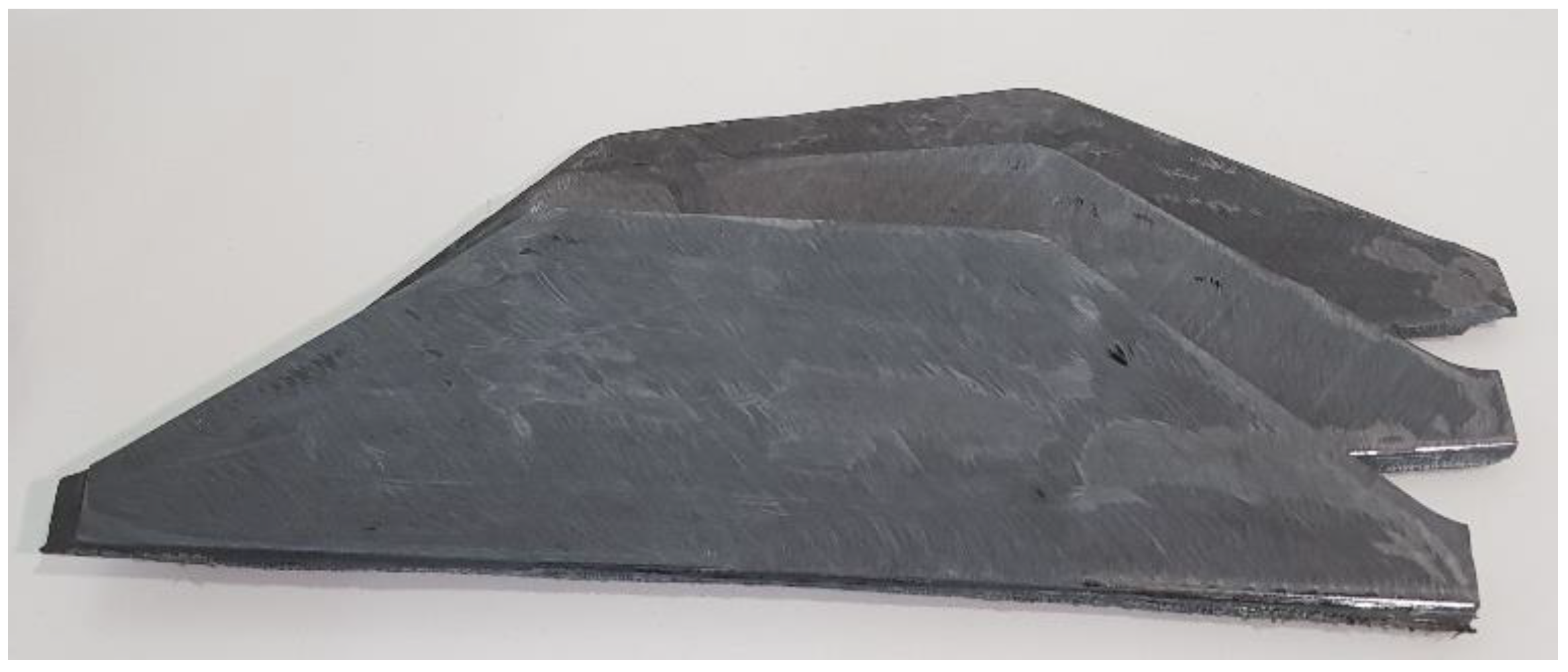

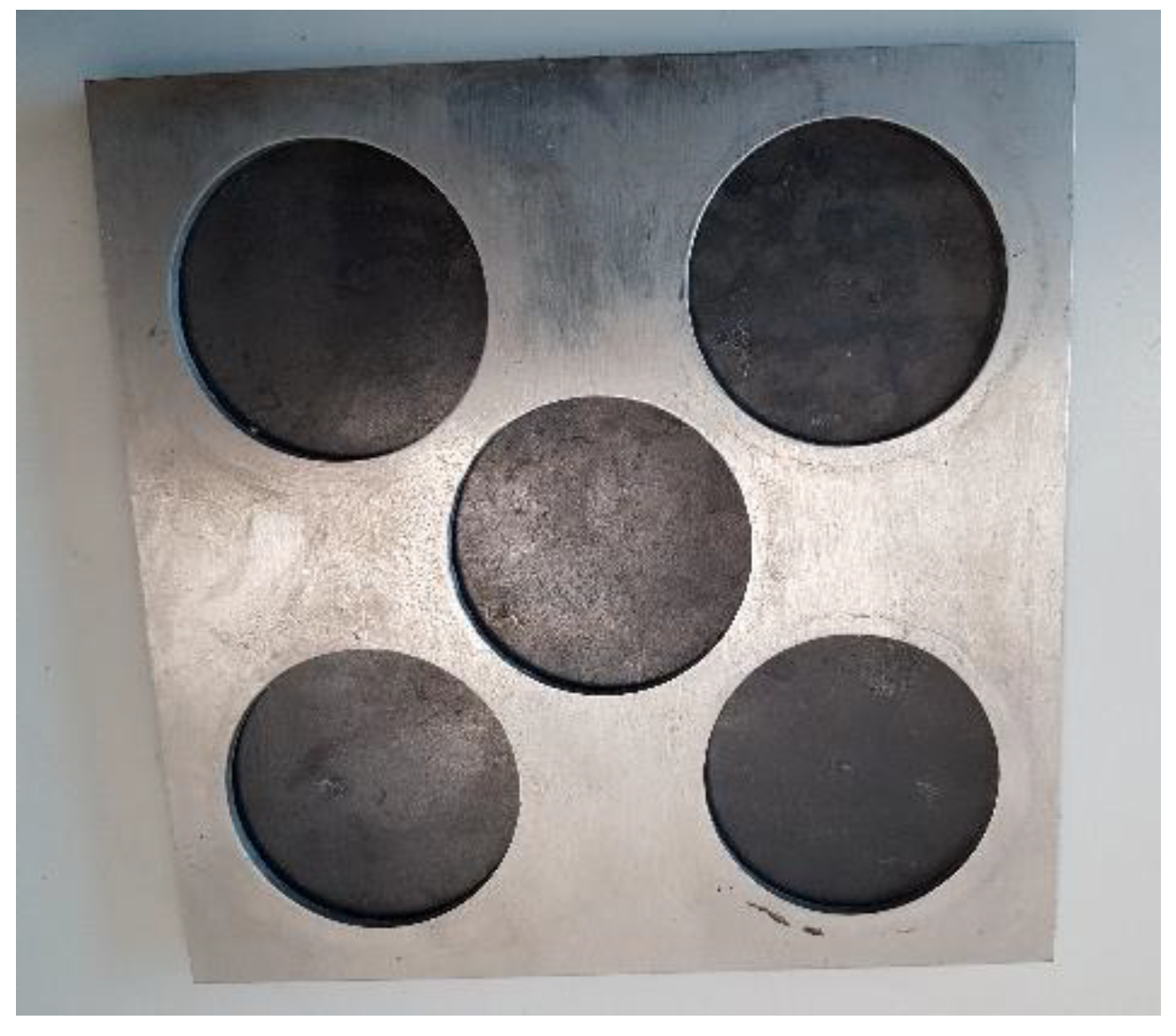

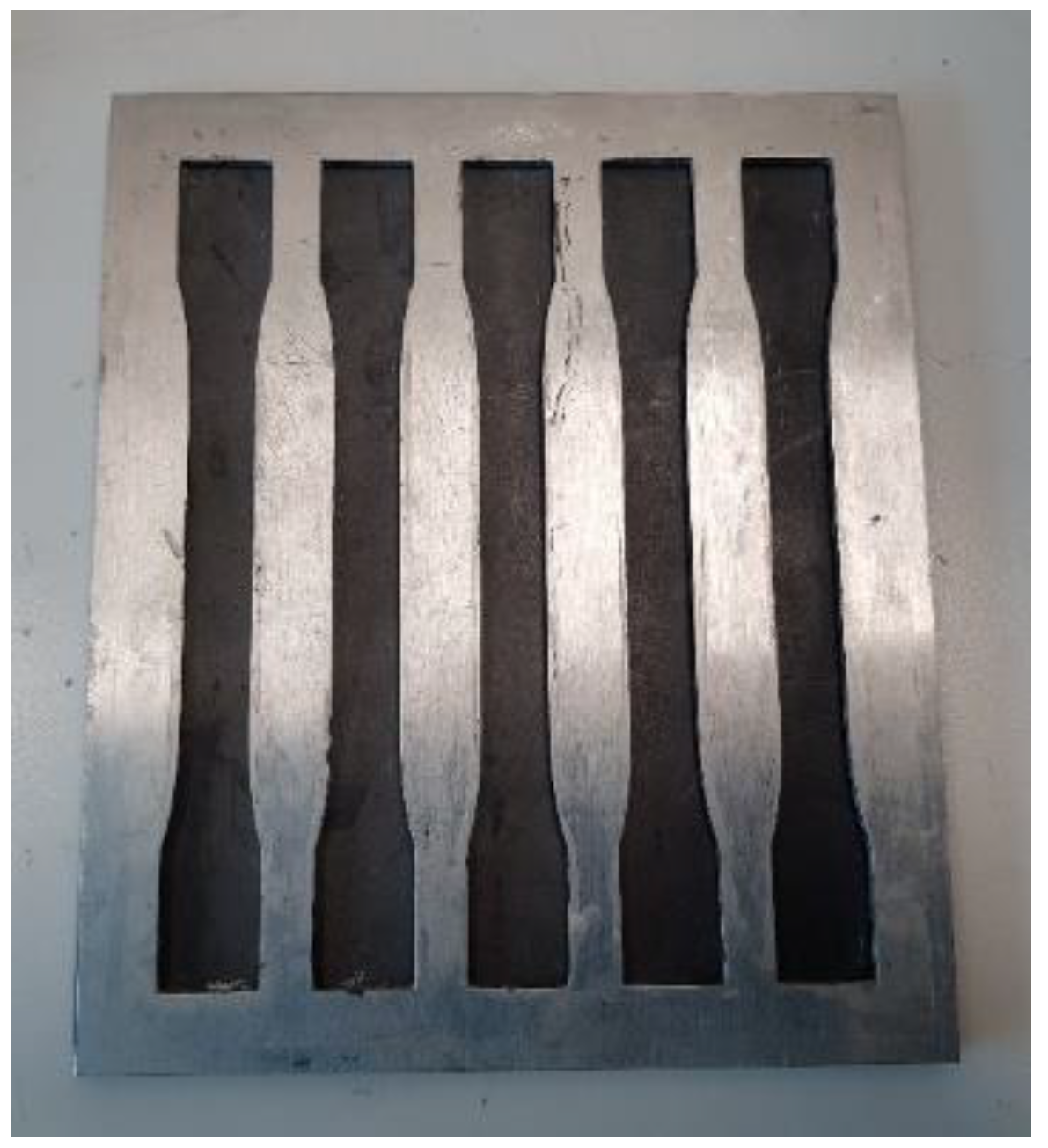
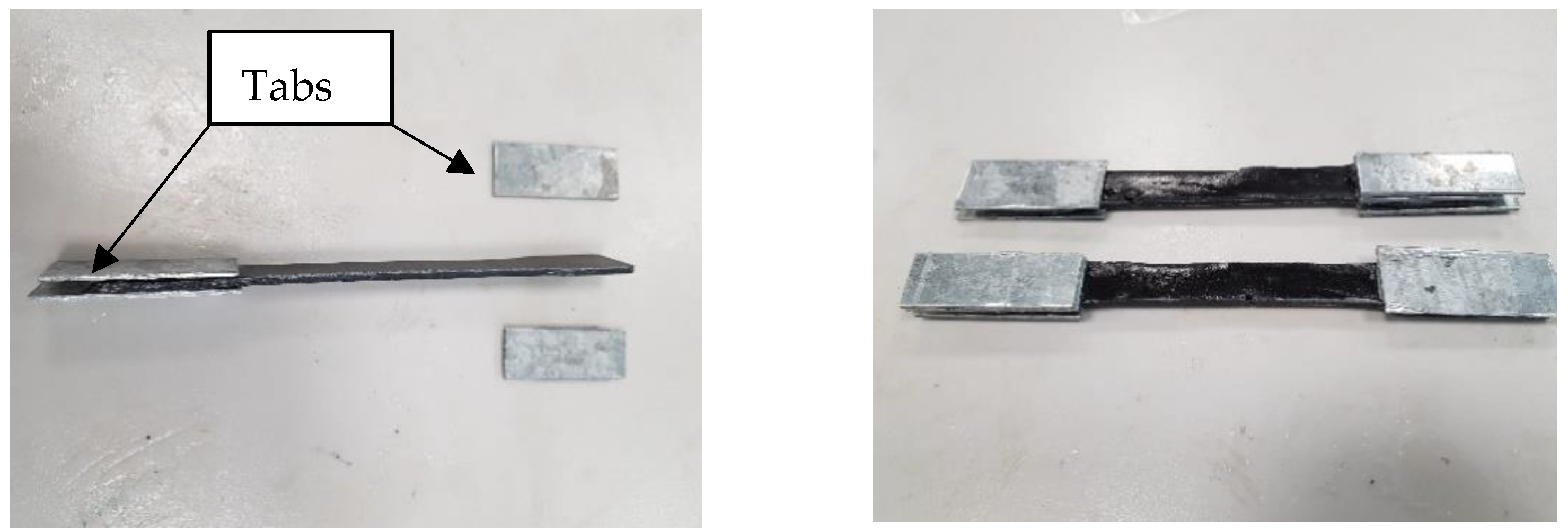


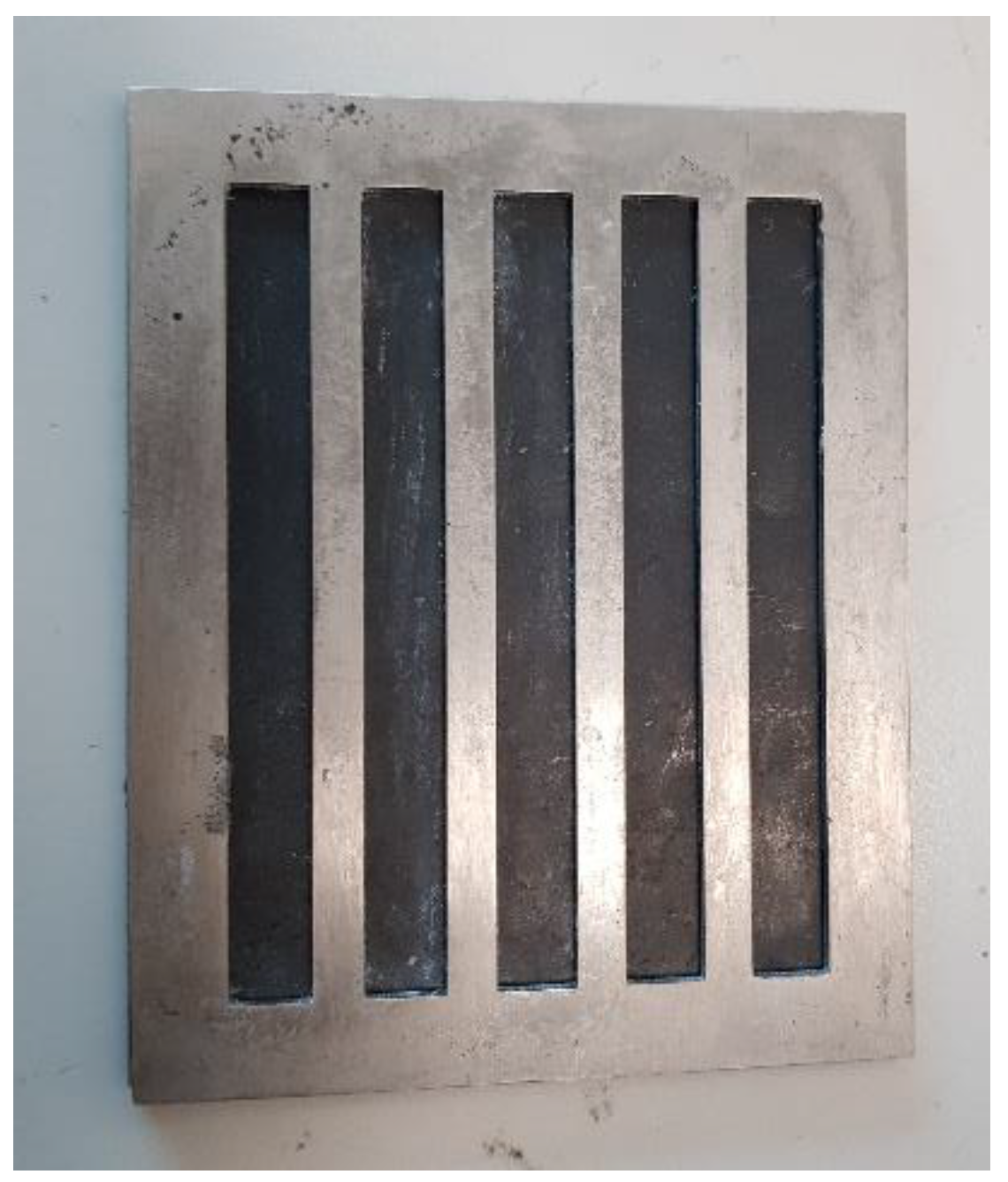
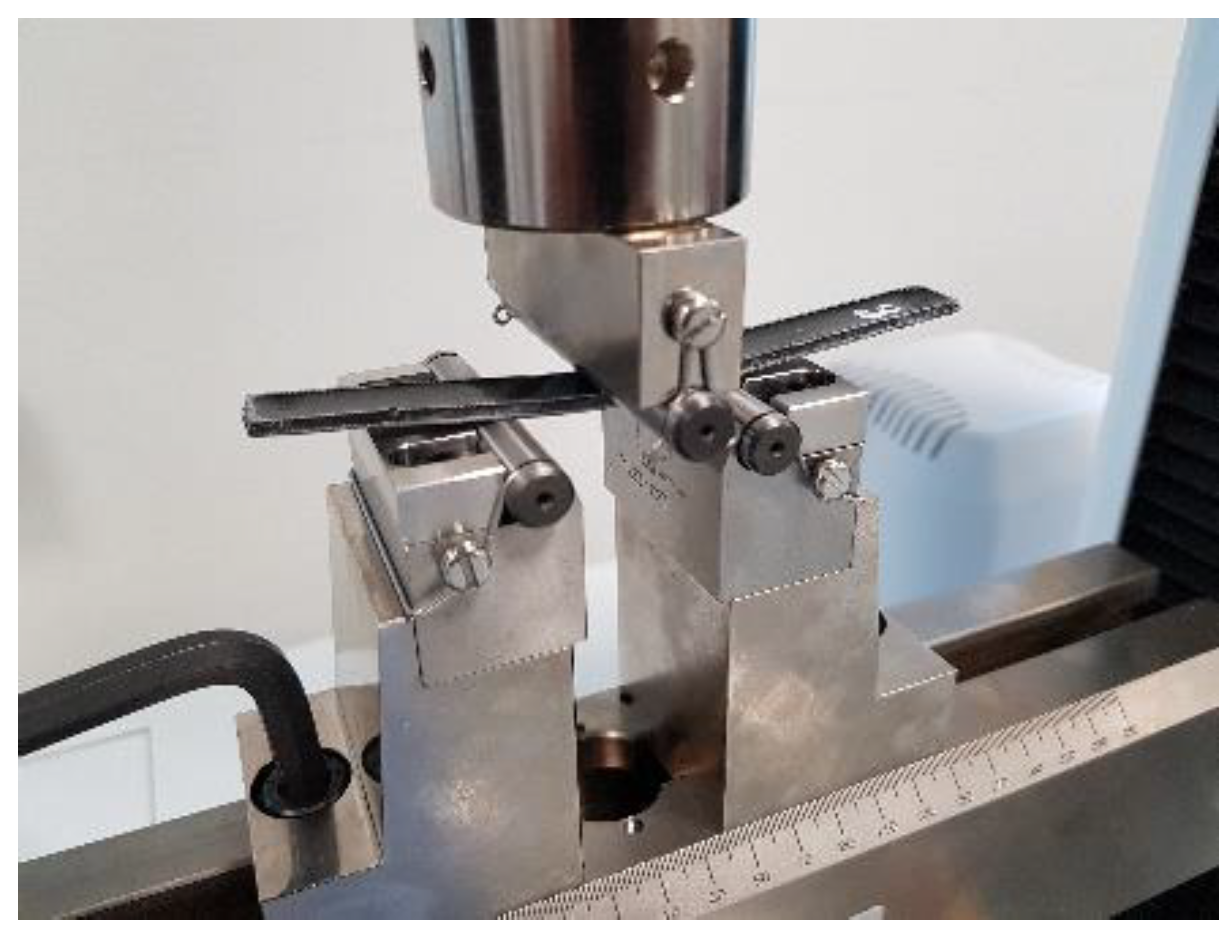

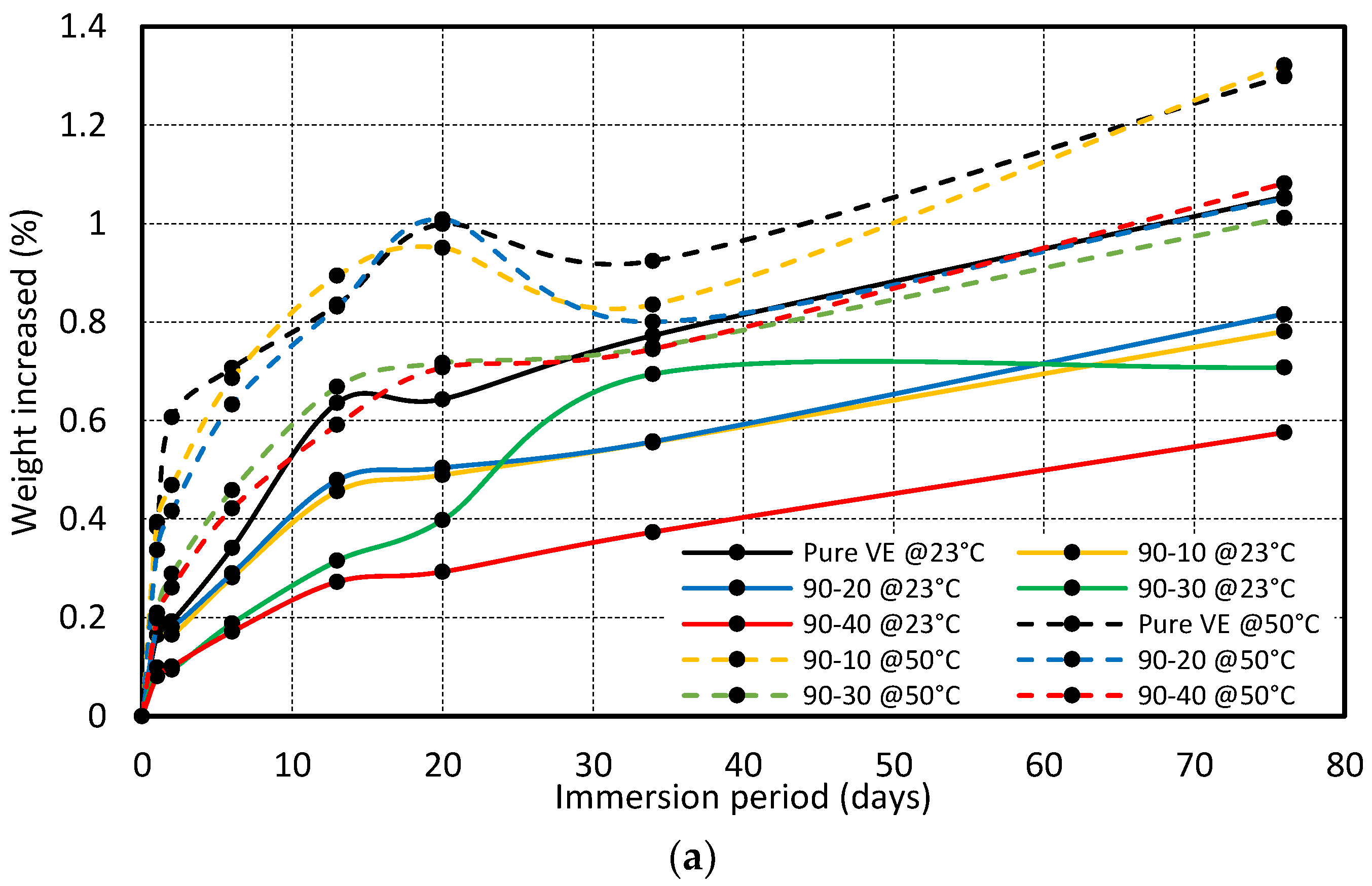

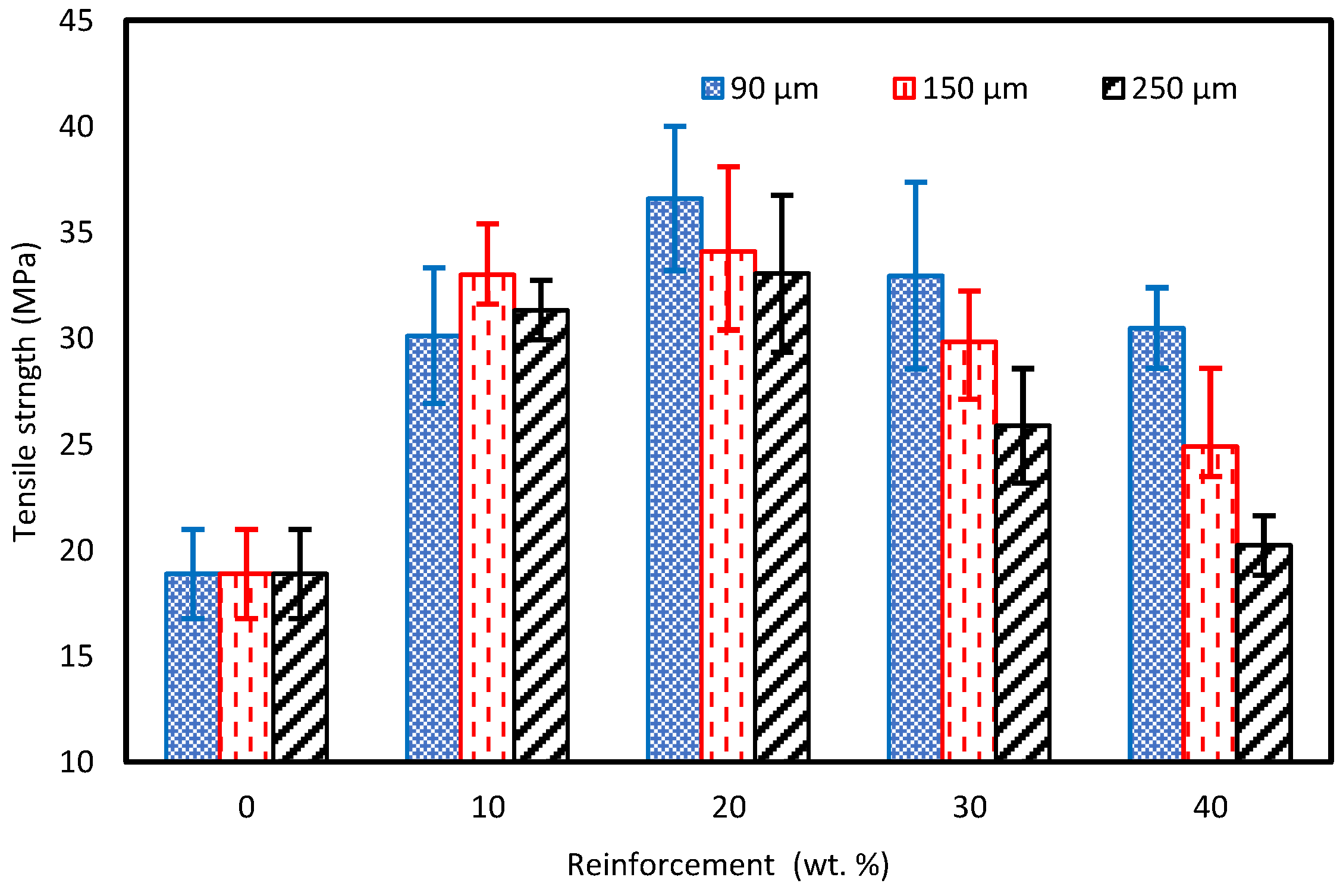
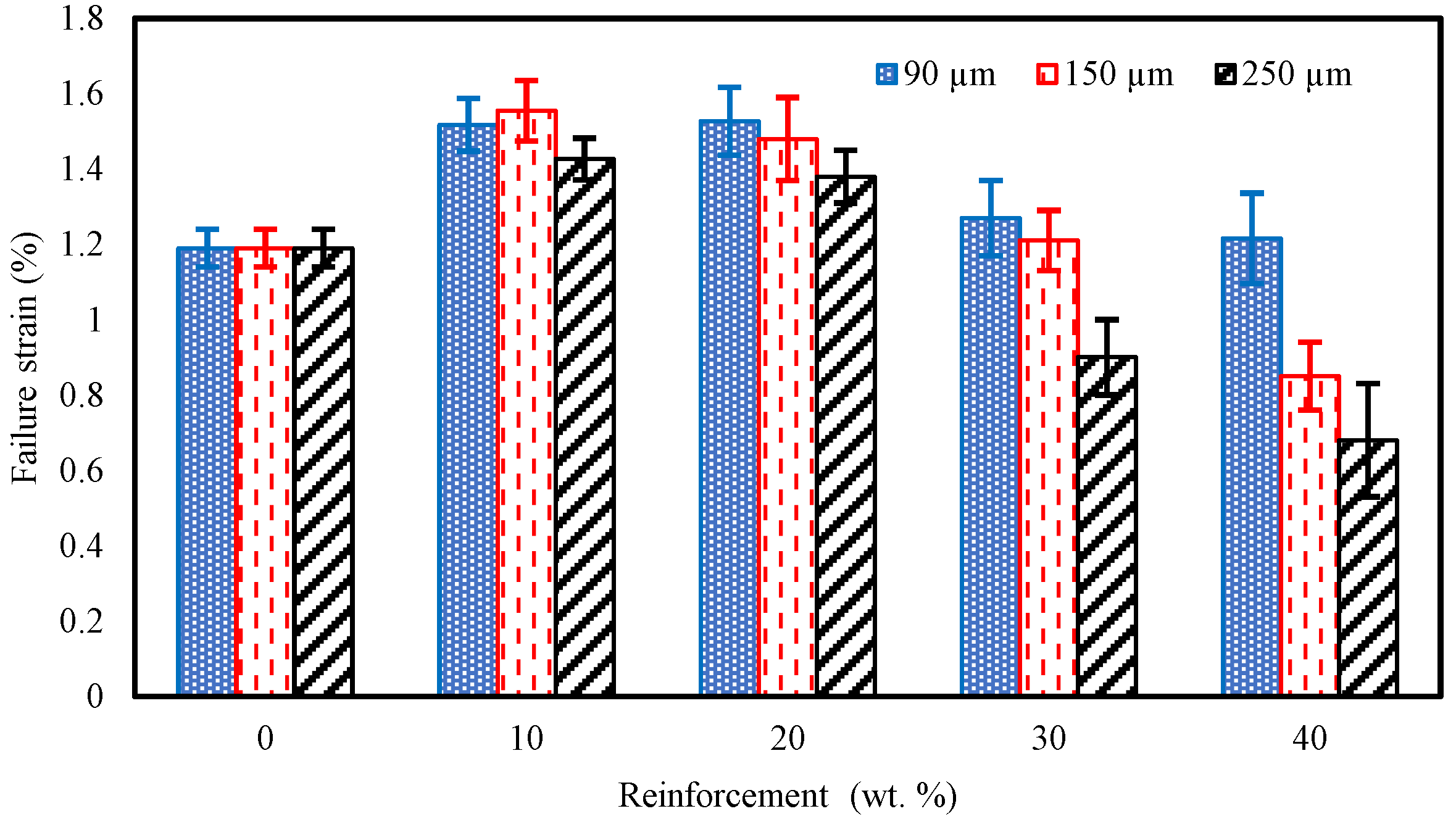
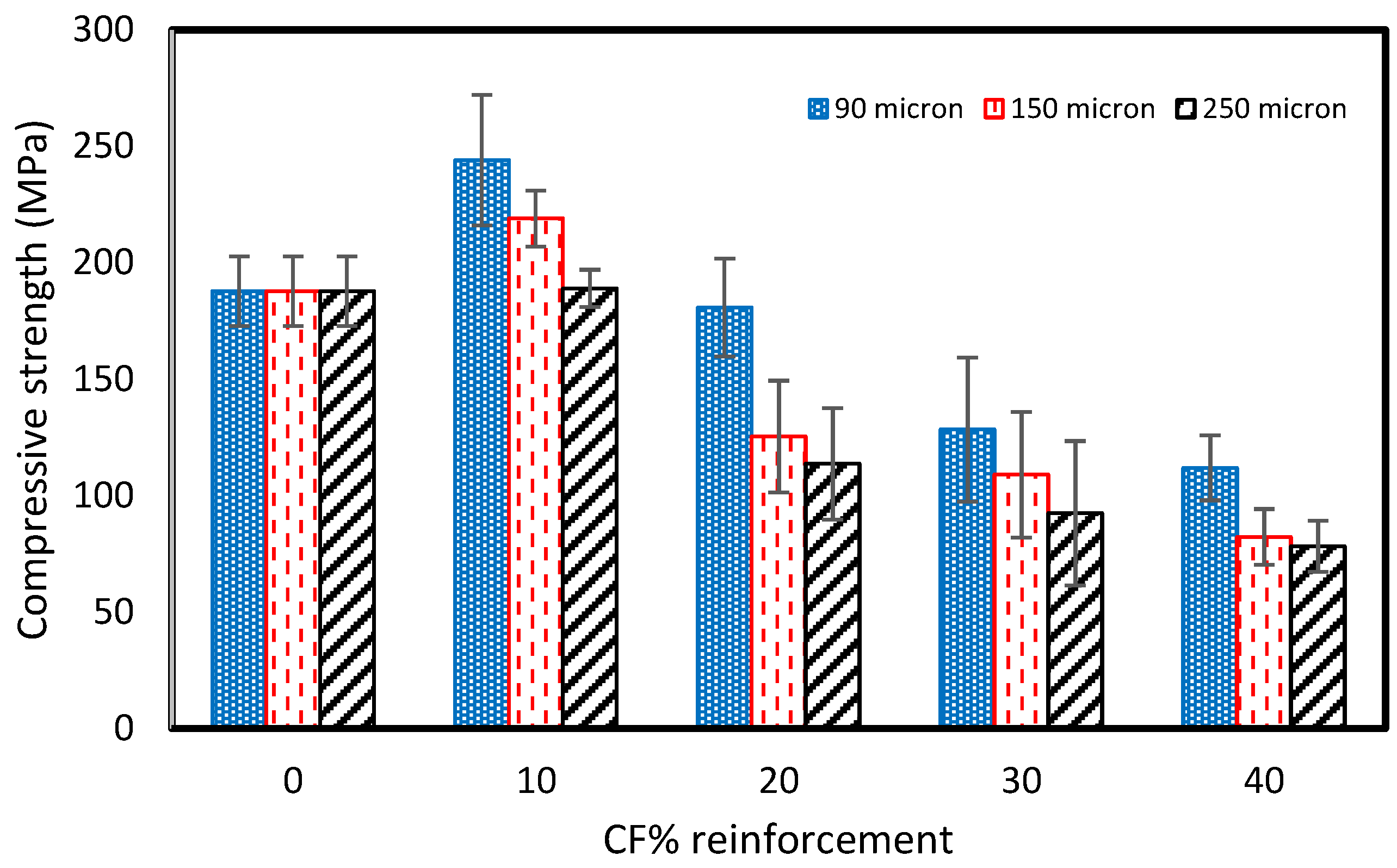
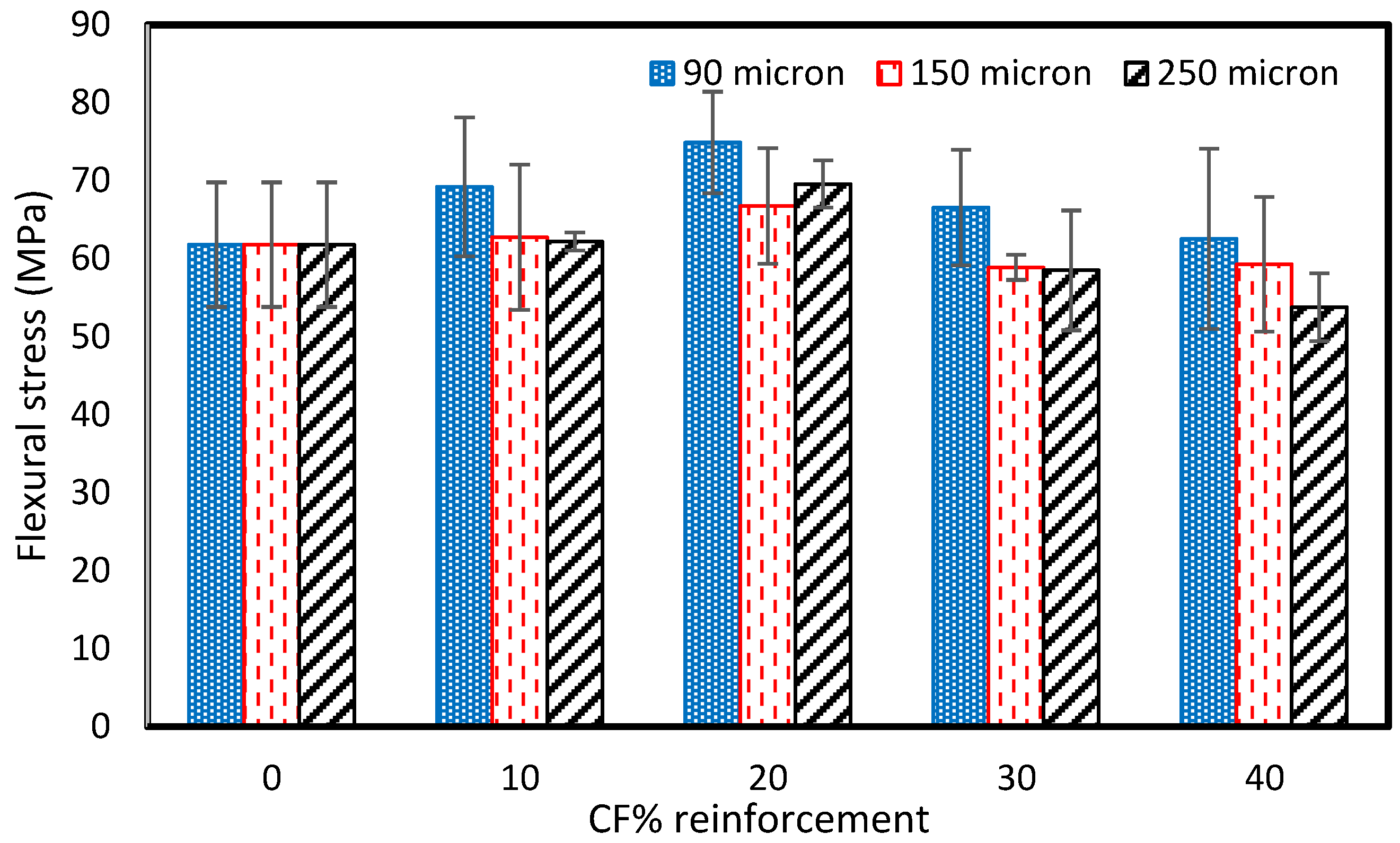
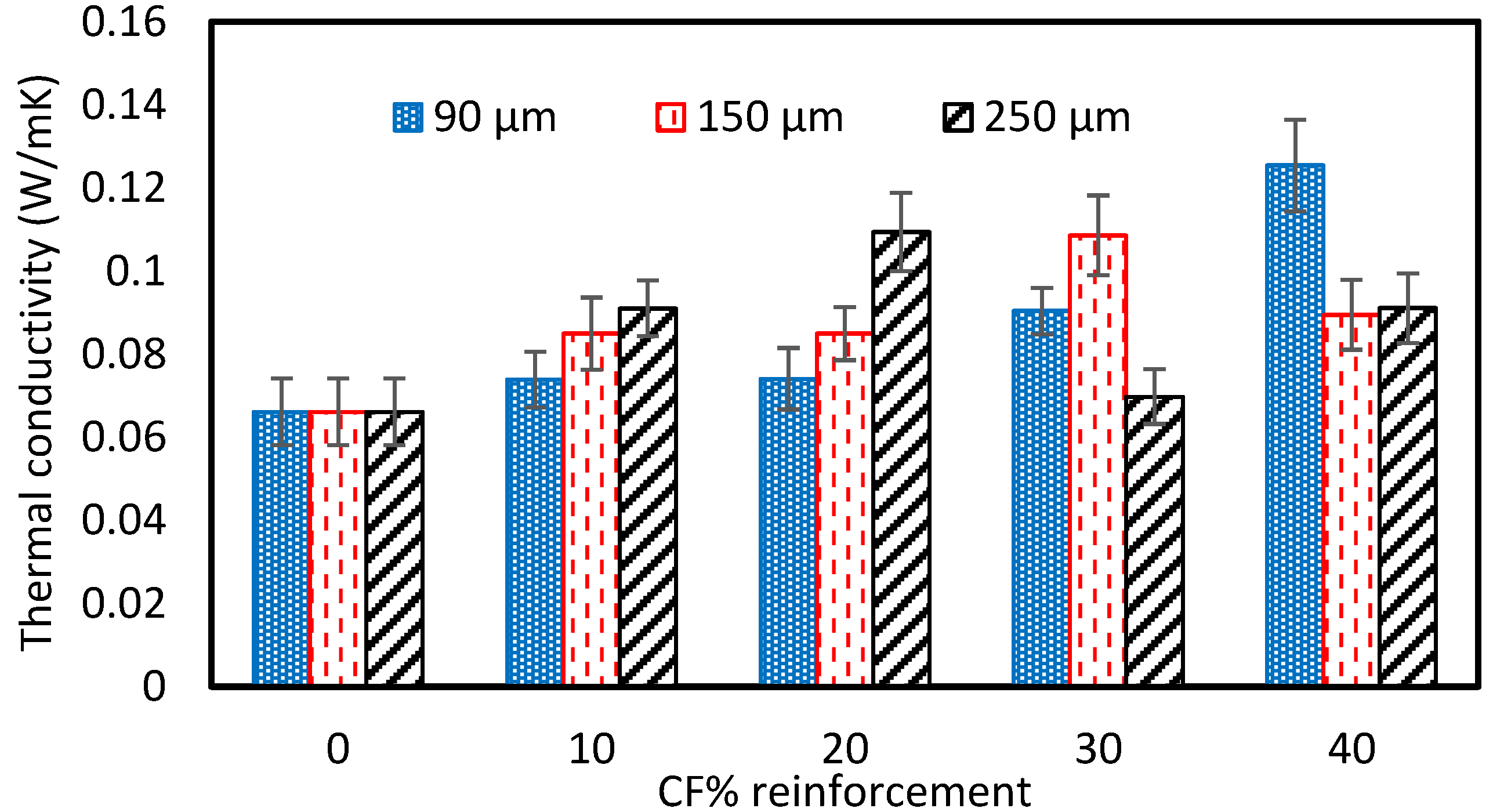
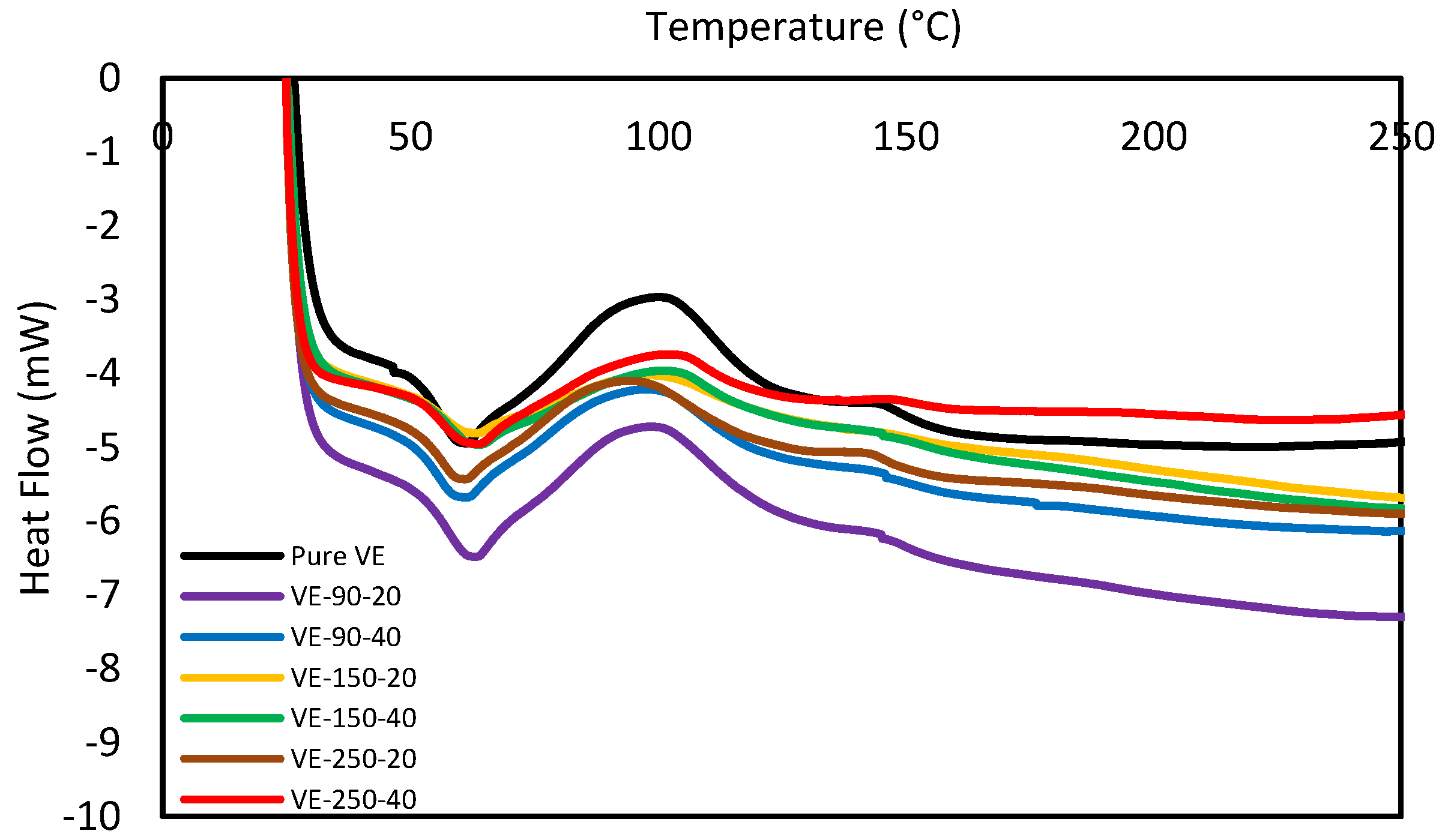

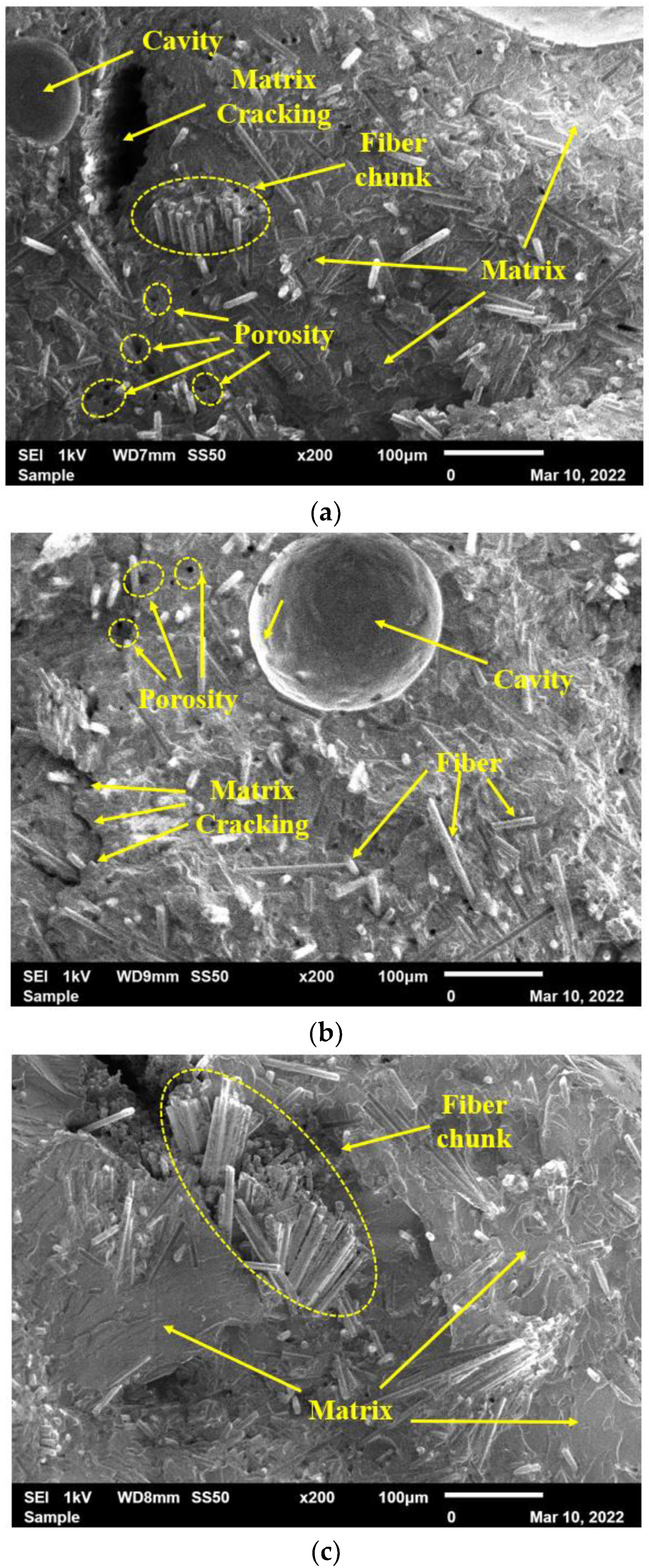
| Property | Unit | Value |
|---|---|---|
| Appearance | - | Clear liquid |
| Viscosity at 25 °C | cps | 450–550 |
| Color | Pinkish | |
| Gel time at 25 °C | Min | 30–50 |
| Acid value KOH/g | mg | <14 |
| Solid content | % | 55 ± 2 |
| Specific gravity at 25 °C | - | 1.10–1.11 |
| Peak temperature | °C | >170 |
| Name | Resin Content (%) | Curing Class (C) | Fiber Areal Weight (g/m^2) |
|---|---|---|---|
| Cycom®977-2-35/40-12KHTS-134 | 35/40 | 180 | 134 |
| Cycom®977-2-35/40-12KHTS-268 | 35/40 | 180 | 268 |
Disclaimer/Publisher’s Note: The statements, opinions and data contained in all publications are solely those of the individual author(s) and contributor(s) and not of MDPI and/or the editor(s). MDPI and/or the editor(s) disclaim responsibility for any injury to people or property resulting from any ideas, methods, instructions or products referred to in the content. |
© 2023 by the authors. Licensee MDPI, Basel, Switzerland. This article is an open access article distributed under the terms and conditions of the Creative Commons Attribution (CC BY) license (https://creativecommons.org/licenses/by/4.0/).
Share and Cite
AlHarmoodi, K.; Idrisi, A.H.; Mourad, A.-H.I.; Abu-Jdayil, B. Utilization of Mechanically Recycled Carbon Fibers in Vinyl Ester Composites. Polymers 2023, 15, 1016. https://doi.org/10.3390/polym15041016
AlHarmoodi K, Idrisi AH, Mourad A-HI, Abu-Jdayil B. Utilization of Mechanically Recycled Carbon Fibers in Vinyl Ester Composites. Polymers. 2023; 15(4):1016. https://doi.org/10.3390/polym15041016
Chicago/Turabian StyleAlHarmoodi, Khaled, Amir Hussain Idrisi, Abdel-Hamid Ismail Mourad, and Basim Abu-Jdayil. 2023. "Utilization of Mechanically Recycled Carbon Fibers in Vinyl Ester Composites" Polymers 15, no. 4: 1016. https://doi.org/10.3390/polym15041016
APA StyleAlHarmoodi, K., Idrisi, A. H., Mourad, A.-H. I., & Abu-Jdayil, B. (2023). Utilization of Mechanically Recycled Carbon Fibers in Vinyl Ester Composites. Polymers, 15(4), 1016. https://doi.org/10.3390/polym15041016









